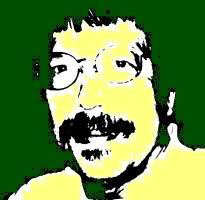Thursday, February 24, 2011
Open Access Copy Available
Integrated Literacy Across the Curriculum
At SUNY Oswego we have three areas in which we require students to develop skills and abilities to an advanced level on the basis of infusion or work across-the-curriculum. These areas include:
- 1. Communication, written and oral
- 2. Critical Thinking
- 3. Information Literacy
We have approached these areas as if they are three to five separate things, leading to overly complex requirements and multiple overlapping programs. On the other hand, a complete description of information literacy offers an integrated view of these skills. And this integrated view can help us design programs that are less burdensome and more powerful.
Below I quote the national Information Literacy Competency Standards and provide notes on how each standard applies to Communications, Critical Thinking and Information Literacy.
The Information Literacy Standards Embrace Communication and Critical Thinking
Information Literacy Competency Standards for Higher Education (ACRL 2000.)
1. The information literate student determines the nature and extent of the information needed.
2. The information literate student accesses needed information effectively and efficiently.
3. The information literate student evaluates information and its sources critically and incorporates selected information into his or her knowledge base and value system.
4. The information literate student, individually or as a member of a group, uses information effectively to accomplish a specific purpose.
5. The information literate student understands many of the economic, legal, and social issues surrounding the use of information and accesses and uses information ethically and legally.
1. Information need
Other words for this include “research question” and “thesis.” This is the first step for both an information search and also for planning and composing an essay. Critical thinking often gives rise to the information need.
2. Access information
This is the one element, searching for and accessing informative sources, that is predominately the concern of library and information science. At the same time, these abilities are meaningless exercises when separated from the kind of discovery and inquiry associated with writing and critical thinking. Any authenticate search for information is embedded in learning, and becomes most powerful when done thoughtfully.
3. Evaluation, critical thinking and learning
Critical thinking predominates here. From the information search perspective, we consider formal means for selecting one source over another. Critical reading of the selected sources provides a deeper evaluation of the information, and develops the material for good writing.
4. Uses information for a purpose
In a college program, written and oral presentation of one’s learning is the ultimate purpose. Obviously communication predominates here, but any presentation is likely to take the form of an argument and to include information from other sources as evidence.
5. Ethical, legal, economic, and social issues
It is easy to read this as about not doing plagiarism. But when we think about our integrity as scholars, we may want to think that we have done a good job in our research, our argument and our writing. In other words, that we treat our field, our sources, our own thinking, and our readers fairly and with respect.
Which is All to Propose
When we grant that these three areas are generally integral and necessary to each other, then we can entertain the development of an integrated statement of learning outcomes, coherent programs for developing and practicing these abilities and an integrated assessment at the capstone level, subject to the practices and situations in the specific disciplines.



